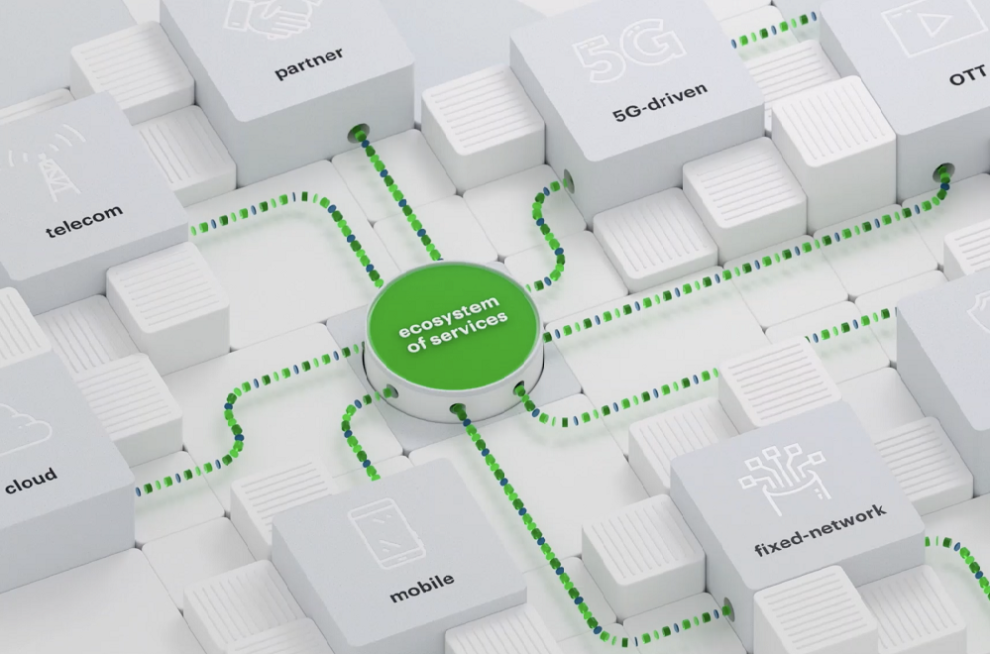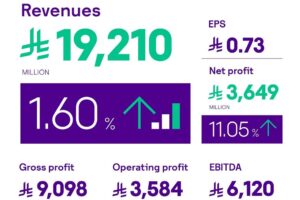Maxim Nartov, Chief Business Officer of Nexign
Today many telecom operators strive to go beyond connectivity and create business value by developing new services and ecosystems. They are expanding their product portfolios and exploring new revenue sources, including cloud, security, finance, and digital entertainment products. In 2022, GSMA reported that MENA operators were providing a growing number of revenue diversification examples, such as Turkcell, STC, e&, and Orange. Maxim Nartov, Chief Business Officer of Nexign, a global provider of BSS and digitalization solutions, explains the impact of the telco industry’s changes on billing capabilities and the role of BSS solutions in achieving new business goals.
Business support systems (BSS), which include billing, charging, and customer management, are vitally important for telecom operators. They ensure continuous operation and reliability of telecom services and help improve business efficiency. However, every 5-7 years, communications service providers (CSPs) need to upgrade their BSS systems due to business evolution and product portfolio changes caused by market demands.
The transformation of the operator’s product portfolio happens for two primary reasons. First, despite the enormous growth in mobile data usage, the CSP’s core services experience revenue stagnation. According to GlobalData, the 2021 mobile average revenue per user (ARPU) in the Middle East was $296 per month, which marked an increase of only 2.5% compared to the previous year. Operators attempt to find additional revenue streams by investing in new services and technologies, such as 5G, cloud, and IoT, as they provide immense opportunities for the industry.

Second, the growing digitalization and the development of services based on digital platforms lead to an increased demand for higher bandwidth and faster connections. As a result, CSPs work on enhancing the network’s capacity and switch to the next generation of communications technology. For example, the previous major network upgrade occurred during the transition to 4G and the related shift from voice and SMS towards LTE data and data only. Now the driver of such changes is 5G. Although the current 5G use rate in the MENA region is just 1%, GSMA experts predict its increase to 17% by 2025.
All these changes have a direct impact on BSS. Modern systems should have the capability to be transformed quickly to meet the new business needs of telecom operators intending to ensure their correct operation and boost the operational efficiency of business processes.
Expanding Product Portfolio and Finding New Revenue Streams
The issue of modernizing BSS systems in terms of new revenue streams is critical. Digital transformation and operator’s growing ecosystems require readiness for new charging and billing instruments and innovative customer service approaches. The concept of BSS systems is being reconsidered, and all billing operations are being transferred onto more adaptive platforms to achieve operational efficiency in the increasingly complex environment. Modern BSS are geared towards a broad product portfolio by going far beyond traditional telecom services. For example, telecom providers can offer a subscription to cloud storage, streaming, and other video services, as well as more interesting combinations, including banking services and billing-on-behalf, when the operator helps subscribers pay for third-party services. CSPs are adding more and more external partner products to their portfolios to keep subscribers interested, which emphasizes the need to increase BSS flexibility further.
Consolidation of Billing Systems and Convergence
Focusing on the client as the “owner” of revenues and long-term investment in ecosystems is changing the attitude to the customer service as well. One of the primary conditions for improving the efficiency of customer engagement and increasing the flexibility and variety of services is the ability to manage accounts and services from a single platform. Otherwise, instead of a “converged” subscriber, operators deal with several independent subscriber accounts. This approach significantly complicates the billing process and leads to reduced loyalty, as the operator loses focus and a 360-degree view of the customer, thus failing to convert potential cross-sell and upsell opportunities. Moreover, the ever-growing number and complexity of tariffs put a huge strain on IT systems. In this regard, consolidating dozens of siloed systems is one of the essential, although costly, steps to provide a unified customer experience.
Telecom providers can achieve maximum efficiency by implementing a single converged platform to manage the entire revenue generation process. Addressing this ongoing demand, Nexign has recently introduced Nexign Revenue Management to help operators focus on consolidated revenues and capitalize on emerging services and new monetization models. The new solution covers the entire revenue management process — from charging and policy management to billing and collection— and is ready to work with any telecom services, digital subscriptions, or third-party products and bundles. Moreover, convergent charging, extensive policy management, network exposure, and network analytics support advanced 4G and 5G network monetization cases.
Nexign Revenue Management enables CSPs to harmonize all revenue streams on a single platform while optimizing operational efficiency. It natively supports the convergence of B2B and B2C business lines, prepaid and postpaid payment models, fixed-line, broadband, and mobile networks, and easily integrates with any digital layer and other systems in the operator’s BSS landscape. Besides, the solution recently received the prestigious MEA Business Technology Achievement Awards 2022 in the Ground-breaking Products/Services category.
Reducing TCO
The pressure of huge investments made by telcos amidst ongoing digitalization has intensified over the past years. The need for reduced TCO (total cost of ownership) is rapidly becoming crucial in the operator’s agenda. Achieving this goal usually implies digital transformation and the shift towards technologies with lower vendor dependency and open-source solutions. Besides, operators strive to simplify, consolidate, and automate their business processes and optimize the use of resources.
Speed of Change
Another interesting issue rooted in the concept of ecosystems is the speed of the telco change. Five years ago, competition in the telecom market depended on the operators’ pricing policy, but today it revolves around a combination of many factors. For example, CSPs try to attract customers by offering them interesting packages with diverse services. Modern BSS systems should support the rapid launch of such ideas, help control their efficiency, and alter them depending on market needs.
The modern digital economy resembles an actively boiling cauldron where new ideas, concepts, and proposals are born. Some of them do not catch on, while others have an effect in the moment, and CSPs need to adapt innovations quickly to remain competitive in the market. The fact that communications service providers are shifting towards the IT industry and starting to develop their own products and services reflects this story.
Conclusion
The concept of BSS systems is undergoing significant changes. Modern BSS should monitor and optimize operational and business processes from basic service charging to billing, new products, and customer service. It should also be flexible to adapt to the demands of the telecom market quickly.
In the race towards 5G, the pace of change required from businesses is accelerating rapidly. As a result, telecom operators continue to rethink and expand their role in value chains, try innovative business models, and explore novel business areas to open new revenue opportunities and offer advanced services to their digital-first clients. Of course, all of these changes impact BSS systems and require focusing on improving operational efficiency and maintaining a high rate of innovation.












